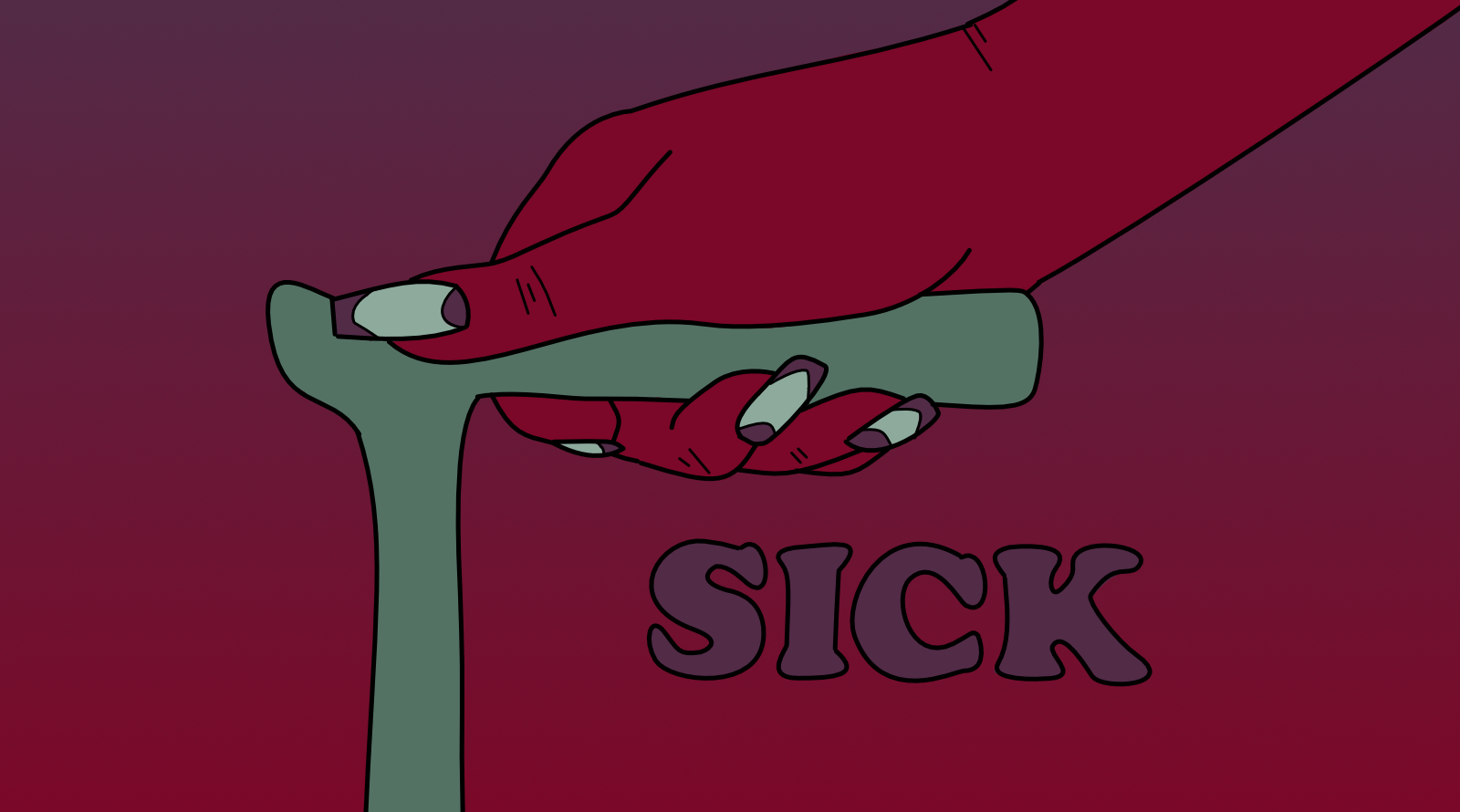Editor's Note: mentions of chronic illness, disability, COVID-19
SICK was created in 2019 by and for people with chronic illnesses and disabilities. With their voices front and centre, this beautifully designed magazine makes for immersive, illuminating and empathy-expanding reading – that is not always for the faint of heart.
In the five years since its first issue was published, SICK has achieved a remarkable level of commercial reach, particularly for an indie publication. With stockists in 13 different countries and a combined social media following of around 15,000, more than 600 people submitted to be part of their last edition, including this reviewer (but I promise not to let it influence my review!)
Part of this success may be down to the coronavirus pandemic. Covid-19 shone a spotlight on disability and chronic illness, as political and media figures explained the greater vulnerability of people with pre-existing conditions and made appeals to protect them by staying at home and getting vaccinated. As these conversations became mainstream, the general public’s awareness and understanding of disability received a massive boost. More of us than ever now identify as disabled and/or chronically ill – or know someone who does – thanks to long covid. It’s unsurprising that this era has seen the magazine strike a chord with such a wide readership.
More of us than ever now identify as disabled and/or chronically ill – or know someone who does...
SICK is also perfect for the Instagram generation. No review would be complete without mentioning how stunning this magazine is. I have one issue as a PDF and splashed out on a physical copy for the latest (Issue 6), and I highly recommend the latter to fully appreciate its beautiful design. This cover art, in particular, is mesmerising.
SICK’s appeal isn’t just skin-deep. Every contributor identifies as disabled and/or chronically ill, and their individual lived experience is at the heart of almost every submission. Right from the Editor’s opening letter, readers are plunged into a visceral account of navigating disability, and the enormous consequences that can come from one false step or overconfident decision. The despair of those missteps, and the days subsequently stolen by treatment and recovery, is palpable. This is certainly not light reading, and it feels pertinent to include a warning that some submissions include unflinching descriptions of symptoms and medical procedures. However, it is deeply affecting and important.
While lived experiences take centre stage, disability and chronic illness do not exist in a vacuum. SICK’s contributors take care to contextualise their experiences. They illustrate how their other forms of marginalisation – most frequently race and gender – also affect their treatment in work and medical settings. People of colour, particularly Black women, report how their pain is ignored or minimised – sometimes by fellow community members. Trans contributors share the balancing act they walk between appearing unwell enough to earn treatment, but not so unwell it is then withheld. Indigenous writer Jen Deerinwater explored the high rates of disability wrought by colonialism on their community. Their subsequent struggle to participate in disability pride movements will be profoundly relatable to anyone pushed into sex work by structural forces.
While lived experiences take centre stage, disability and chronic illness do not exist in a vacuum.
Addressing structural issues provides the opportunity for readers to consider how they might better promote inclusivity in their own spaces. SICK’s rich and diverse submissions highlight that no two experiences are identical, and even those with the same condition may have divergent symptoms and challenges. Contributor Amy Dickinson’s essay Can Everyone Have Access? explores the paradox of terms like “fully accessible”; impossible, given the enormous spectrum of disability, chronic illness, neurodivergence and individual needs. The guidance offered, of how venues can instead outline their facilities and capacities – and not bristle at requests for additional accommodations – is a blueprint that any activists or organisers could only benefit from.
While the magazine is not focused on sex work, I was heartened to see that this box is available for contributors to tick on their equal opportunities form when submitting. Over email, editors were explicit in recognising sex work as another form of marginalisation that frequently intersects with disability and chronic illness. Indeed, this overlap is substantial; research published last year found that a whopping 48% of sex workers in the UK identified as either disabled or chronically ill. Ableist and inaccessible workplaces have been identified as key factors informing decisions to enter the sex industry. The UK government has recognised that delays in accessing universal credit, including disability benefits, have pushed many people into sex work.
SICK magazine was among the sources of inspiration for The Scarlett Letters’ first zine, and reading the latest issue saw me scrabbling for my notebook to record some other ideas – creative microgrants a particular highlight. It is unequivocal about being a magazine created by and for people with chronic illnesses and disabilities, with their voices front and centre. Given how overrepresented this community is among sex workers, I hope to see future issues feature more submissions exploring this overlap.
SICK is a visual feast packed with excellent writing that pulls no punches – highly recommended.
Are you a sex worker with a story, opinion, news, or tips to share? We'd love to hear from you!
We started the tryst.link sex worker blog to help amplify those who aren't handed the mic and bring attention to the issues ya'll care about the most. Got a tale to tell? 👇☂️✨





